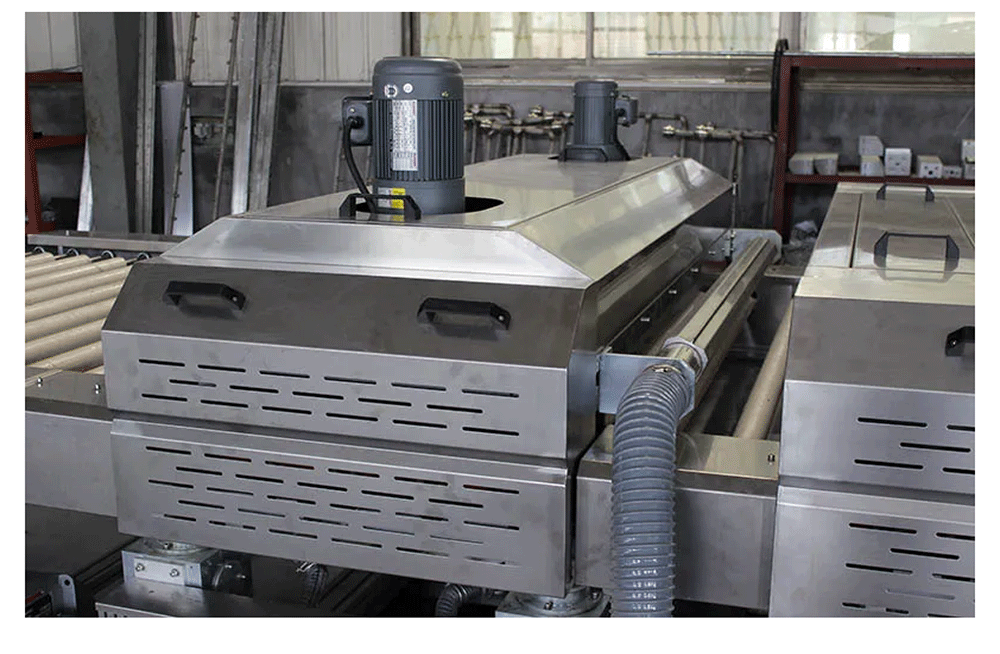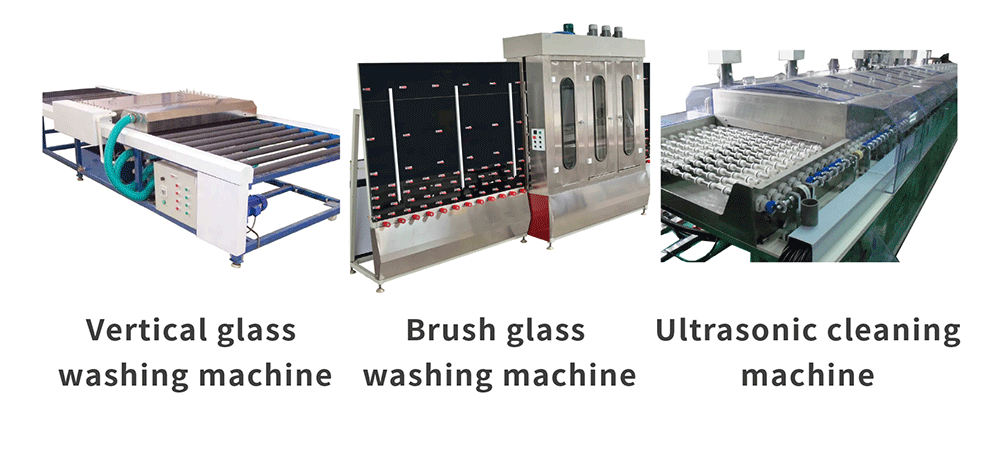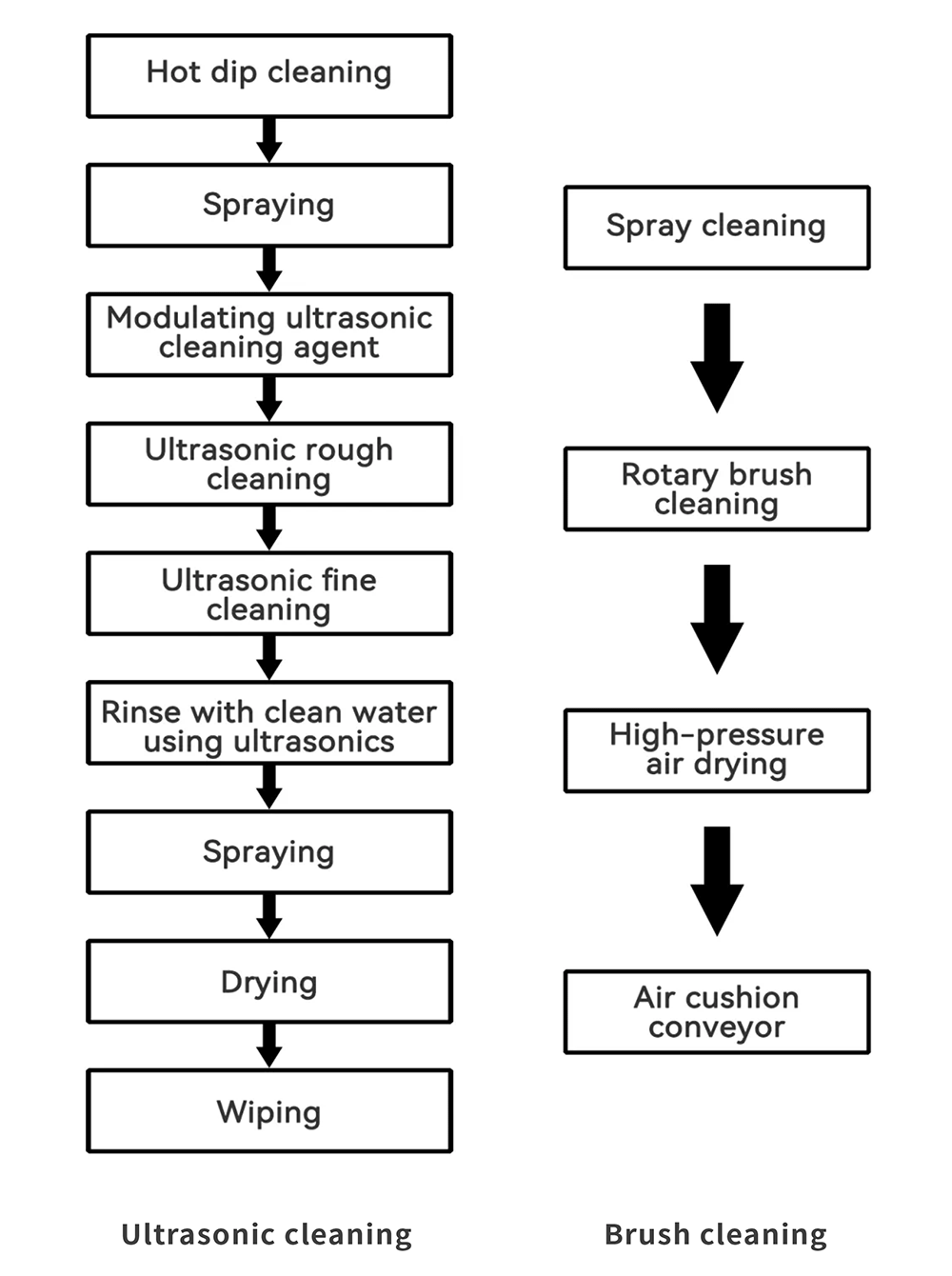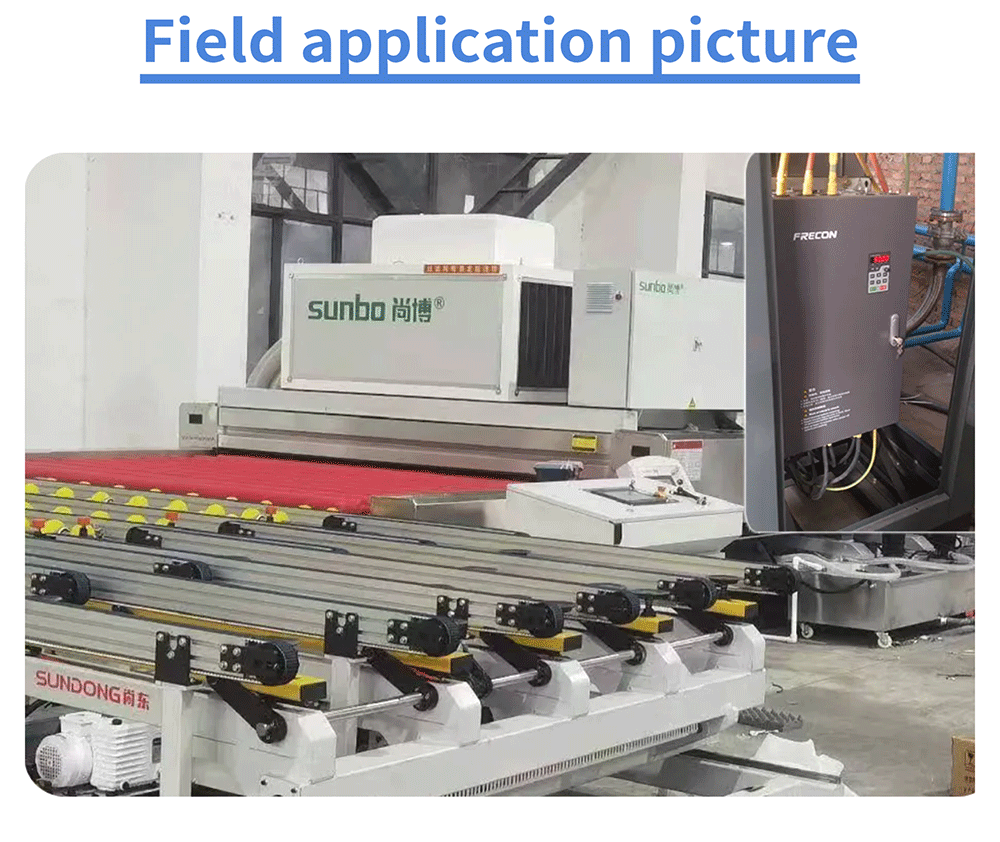
Glass machinery refers to specialized mechanical equipment used in the production and processing of glass. It includes various types
of machinery such as float glass production lines, tempering furnaces, homogenizing ovens, laminating lines, insulating glass lines,
coating lines, screen printing equipment, glass edging machines, glass washing machines, fully automatic Guode glass sandblasting
machines, polishing machines, glass loading tables, cutting machines, drilling machines, engraving machines, and others. These
machinery are widely used in fields such as construction, decoration, furniture, automotive, electronics, and more.

A glass washing machine is a type of equipment used in the glass industry. Its operation involves transporting glass that needs
cleaning into a washing chamber via a conveyor belt. Inside the washing chamber, the glass undergoes several stages, including
pre-washing, water washing, intermediate rinsing, and drying processes. These steps effectively remove stains, oil residues, dust,
and other contaminants from the surface of the glass.

The glass washing machine mainly consists of a transmission system, brushing, rinsing with clean water, rinsing with pure water,
cold and hot air drying, and an electrical control system. Depending on user requirements, medium to large-scale glass washing
machines may also feature manual (pneumatic) glass flipping trolleys and inspection light sources. They are classified by cleaning
method into vertical glass washing machines, platform-type glass washing machines, and handheld glass washing machines.
According to cleaning effectiveness, they are categorized as brush washing machines, dual-brush washing machines, and ultrasonic
cleaning machines. Brush washing machines are known for their energy efficiency and low noise, while ultrasonic cleaning machines
excel in solving traditional cleaning challenges better than other methods.


Its working principle is generally divided into the following steps:
1.Spray cleaning: Set up spray nozzles inside the washing machine to spray-clean the glass surface, removing surface stains and dust.
2.Rotary brush cleaning: After spray cleaning, use rotating brushes to thoroughly clean the glass surface.
3.High-pressure air drying: Use high-pressure air to blow-dry the cleaned glass surface, achieving thorough drying.
4.Air cushion conveyor: The cleaned glass is conveyed through an air cushion conveyor system to subsequent processing stages.
In these processes, the VFD can play a crucial role by controlling the rotation speed of the spray nozzles inside the washing machine,
the rotation speed of the brushes, the air volume of the high-pressure blowers, and other parameters. This enables fine control over
the cleaning process, enhancing cleaning quality and production efficiency.


When a glass washing machine utilizes a VFD, the VFD receives control signals from the PLC (Programmable Logic Controller)
and converts them into appropriate frequency signals to control the motor's speed. The VFD adjusts the motor's speed to regulate
the cleaning efficiency of the washing machine.
Additionally, the VFD can monitor parameters such as motor current, voltage, power, etc., and make adjustments as needed to
ensure stable operation of the washing machine. Furthermore, the VFD has protective functions for the motor, capable of
monitoring parameters like temperature, vibration, overload, etc. It can promptly send out alarm signals to prevent motor
damage when necessary.

The benefits of using the FR500A series VFD in a washing machine include: enabling flow control for optimized water usage,
facilitating continuous operation and quick start/stop capabilities, reducing energy consumption and improving efficiency,
lowering maintenance costs, and extending equipment lifespan. In glass machinery, the washing machine is indispensable,
playing a crucial role in glass processing production lines.

·Extending Equipment Lifespan: The VFD enables soft start and stop of the motor, avoiding the mechanical impact that traditional
on/off switches can have on equipment. This capability reduces equipment damage and extends its lifespan.
·Improving Product Quality: By adjusting the motor's speed and torque through the VFD, the glass washing machine can clean
according to the desired intensity and speed, thereby enhancing cleaning efficiency and quality. Additionally, reducing operational
noise and vibration minimizes maintenance costs and lowers failure rates.
·Boosting Production Efficiency and Stability: The VFD also enables automation control, which enhances the production efficiency
and stability of the glass washing machine. This capability reduces the need for manual intervention, thereby increasing the intelligence
level of the production line.
·Convenient Operation: Using a VFD enables intelligent control of the washing machine. Motor speed, start/stop functions, and
parameter adjustments can be easily managed via a control panel or external signals, simplifying operation.
·Energy Saving: VFD can automatically adjust the motor's speed based on the workload to achieve optimal operational efficiency.
This capability helps conserve energy and reduce production costs.
·Improving Equipment Reliability: VFD can protect the motor during operation by preventing occurrences such as overload and
overheating. This proactive protection helps extend the motor's lifespan and enhances equipment reliability.
·Reducing Maintenance Costs: By monitoring parameters such as current, voltage, and temperature, VFD can detect abnormalities
in equipment. When an issue arises, the VFD automatically initiates protective measures, thereby lowering maintenance costs associated
with unexpected failures.

FR500A series VFD adopt a new generation of vector control technology. They provide ample low-frequency torque, fully meeting
the demands of heavy-load startups, and feature multi-stage speed operation for enhanced flexibility during startup processes.








